
work in progress
Bethlehem
A small town in the North-eastern Free State, geo-position: 28.2336°S, 28.3095°E and 1638m altitude. I make it easy on myself and just quote from Ref 2: The town was founded in 1860 on the farm Pretoriuskloof, which belonged to Johannes Christiaan Pretorius. In 1874 it was handed over to the NG church. The first village management board was appointed n 1876, and in 1884 Bethlehem was proclaimed a township. Why did it get that name? The earliest settlers found that wheat throve, and when the town was established it was named Bethlehem (House of Bread) after its biblical counterpart (Judges 17: 7). The river flowing through the town was aptly named the Jordan.
Churches
NG church
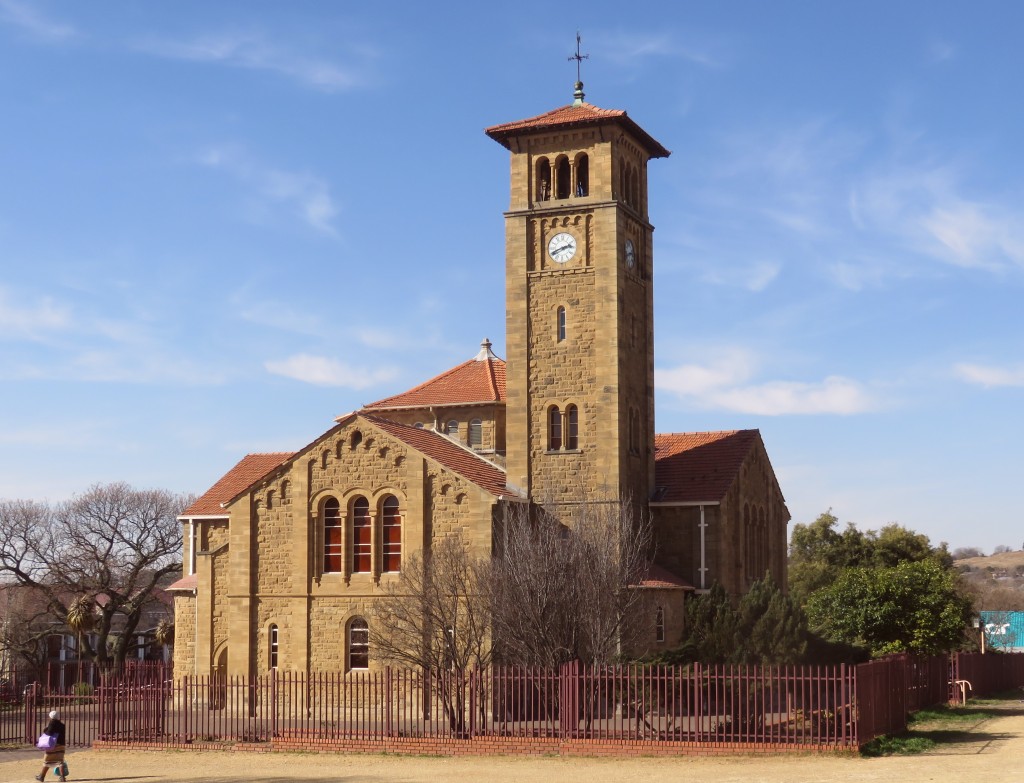 As farmers moved into the area a congregation of the Nederduitsch Gereformierte Kerk was forming. Initially under the congregation of Harrismith. The first small church was built in 1859, this coincided with the laying out of the town. The first stands of it were sold in 1860 and the town proclaimed in 1864. But the congregation was still that of Harrismith with Bethlehem being a subsidiary church.
As farmers moved into the area a congregation of the Nederduitsch Gereformierte Kerk was forming. Initially under the congregation of Harrismith. The first small church was built in 1859, this coincided with the laying out of the town. The first stands of it were sold in 1860 and the town proclaimed in 1864. But the congregation was still that of Harrismith with Bethlehem being a subsidiary church.
In 1869 the congregation was strong enough to cede from Harrismith, they were now a separate congregation from Harrismith. But to have a full time minister was still not possible since the country still had a shortage of qualified clergy. For the time being they were still served by Dugald Macmillan from Harrismith. And only in 1872 was the congregation successful in attracting a minister, that was C.P.Theron who had just qualified and was doing mission work in Middelburg in the Cape.
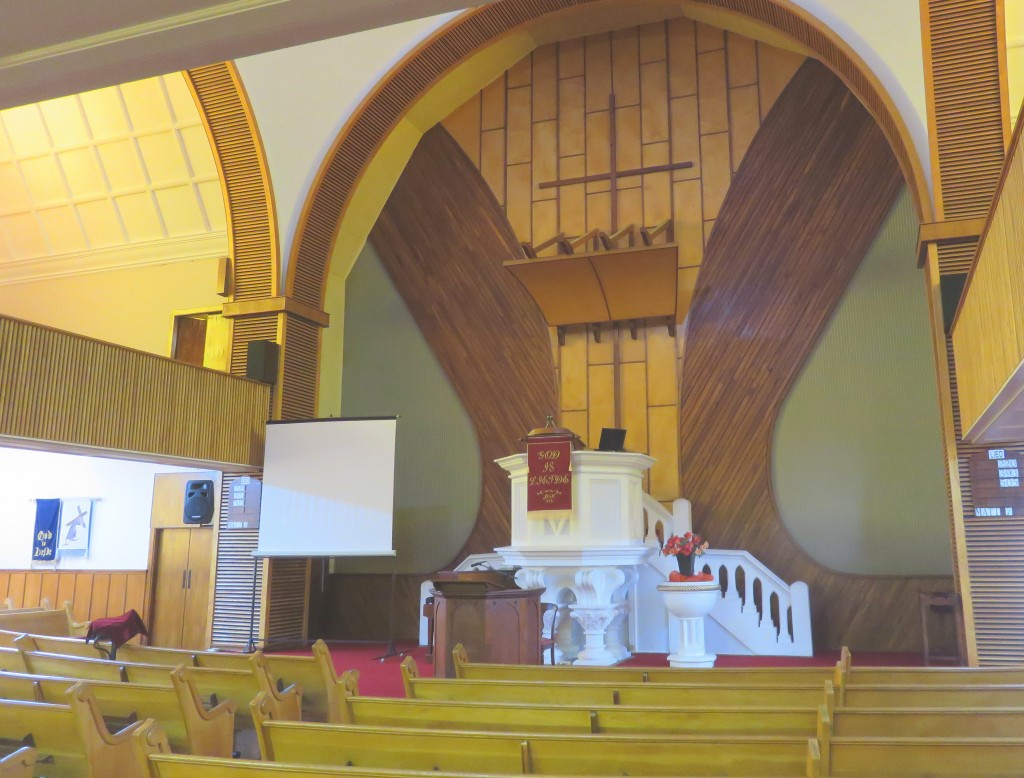 A somewhat amusing story, the new minister was actually not unknown to the people of Bethlehem. About a year before he was appointed, him and a fellow student were on their way to Natal passing through the area. Whilst camping out near town they caused a fire which destroyed a considerable area of grazing. They had to appear at the justice of the peace the next morning. The farmer claimed £20, which was reduced to £3 and when it was found that they were theologists they were given additional punishment and were told that on their way back one of them has to preach at the church on a Sunday. This was done by CP Theron. Loaded with biltong and biscuits they returned to the Cape.
A somewhat amusing story, the new minister was actually not unknown to the people of Bethlehem. About a year before he was appointed, him and a fellow student were on their way to Natal passing through the area. Whilst camping out near town they caused a fire which destroyed a considerable area of grazing. They had to appear at the justice of the peace the next morning. The farmer claimed £20, which was reduced to £3 and when it was found that they were theologists they were given additional punishment and were told that on their way back one of them has to preach at the church on a Sunday. This was done by CP Theron. Loaded with biltong and biscuits they returned to the Cape.
The first church built very soon became too small. Especially felt during Nagmaal (holy communion) when the church was full to overfull. After a period of collecting money the construction of a beautiful sandstone church was started in January 1880. The architects was Mr.Dayson from Scottish origin and the cost £12000. This new church in Gothic style was inaugurated in 1882, and note this is not the present church.
By 1908 it was noticed that the church was cracking up, the foundation was sagging at places and the building was in danger of collapsing. Thus a new church had to be constructed. The foundation stone was laid in the presence of President MT Steyn in February 1910. Architects were Hawke, McKinlet and White from Bloemfontein and the total cost £12000. With its central dome it had some roman character, very pleasing to the eye. It was taken into use on 18 Feb 1911.
 During our inspection visit we made it up to the clock works, still ticking away happily. It was supplied by E.Burmester of Cape Town, dated 1910. E.Burmester was a well known shop in Capetown for jewelry, watches and clocks.
During our inspection visit we made it up to the clock works, still ticking away happily. It was supplied by E.Burmester of Cape Town, dated 1910. E.Burmester was a well known shop in Capetown for jewelry, watches and clocks.
NG church Wes
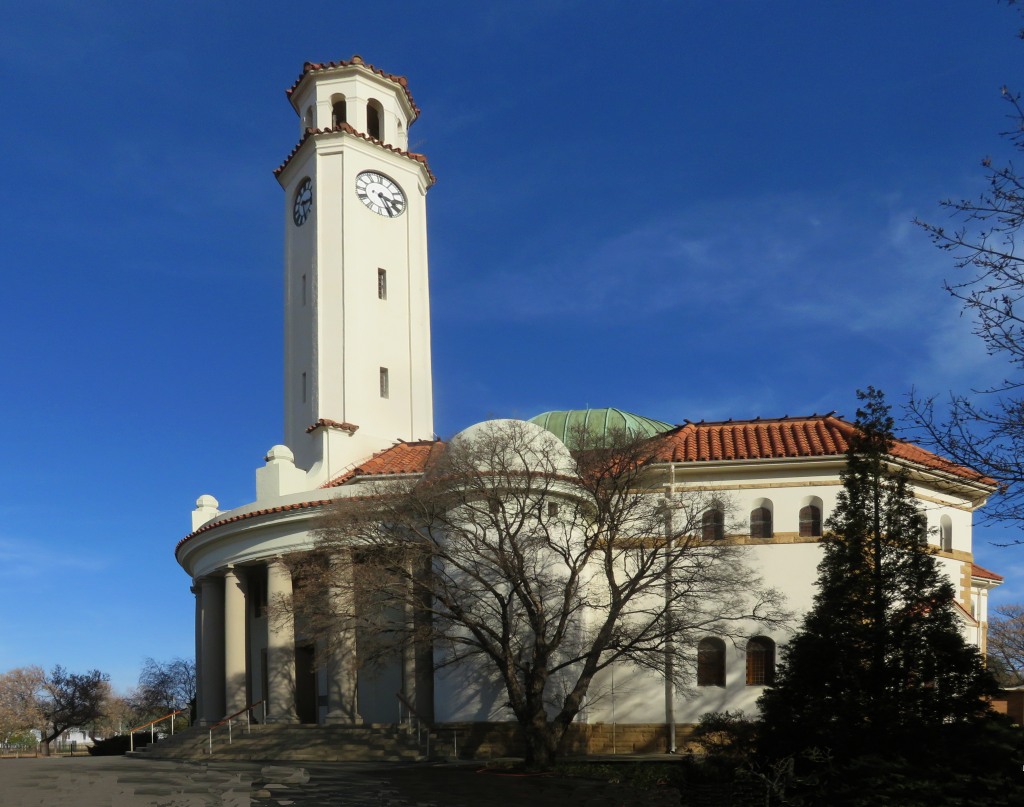 As the town was growing and the church membership was increasing it became necessary to split the congregation. The congregation of Bethlehem-Wes was formed in 1927 and a new church had to be built.
As the town was growing and the church membership was increasing it became necessary to split the congregation. The congregation of Bethlehem-Wes was formed in 1927 and a new church had to be built.
A very imposing building, the architects were Louw & Louw, that would be the partnership of Wynand Louw and his brother. The building contains elements from Roman, Byzantine windows and domes), Greek (columns of the entrance and Barock (main entrance) architecture.
The situation with the congregation now is that they have amalgamated again due to shrinking numbers. Something I have observed in many other towns, it's the changing demographics.
NG Sendings Kerk
Writing about the museum (see below), which used to be the NG Sendings Kerk led me to reading up about the history of this church and decided to cover this as a separate subject. The NG Sending Kerk is the missionary arm of the NG church into the black communities.
From early days of the town, Bethlehem was a center of the mission to the black people. C.P.Theron, the first minister of the NG church, was strongly involved in it. He was a member and later also the chairman of the mission society for many number of years. He was the first in the Free State to establish a black congregation here in Bethlehem. The first church building was erected in 1884, it is reported as between the cemetery and the road. Soon it was to small and had to be extended. During the Boer war it got badly damaged and the pastory had been destroyed.
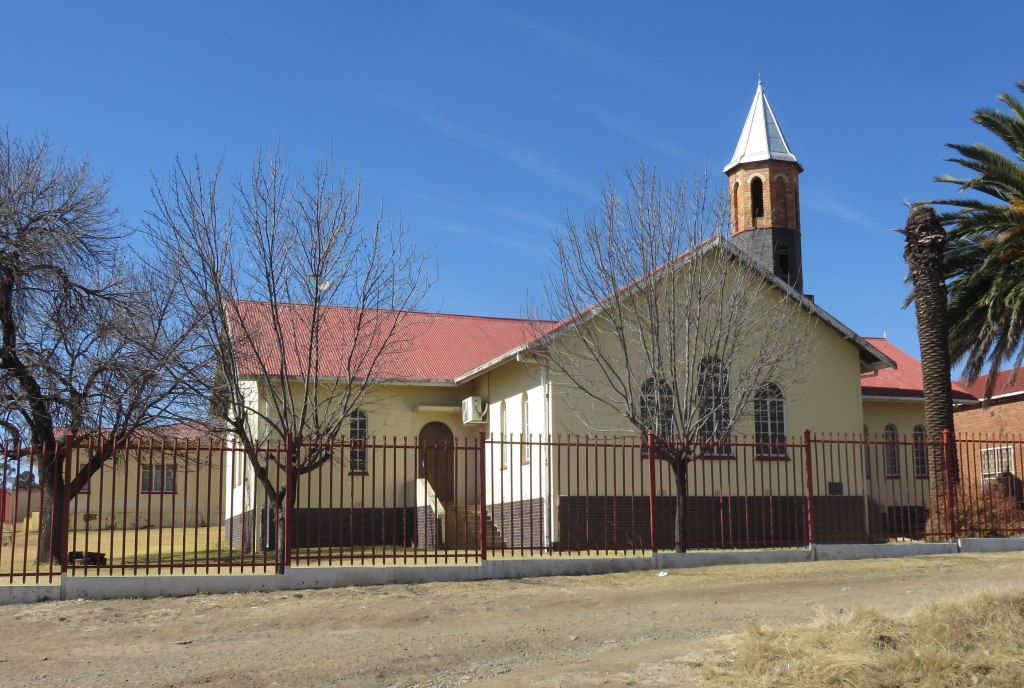 The need for a new, bigger church became apparent. A start was made with a collection from the white community. The foundation stone was laid in 1906, completion had to wait for more funds becoming available and happened in 1910.
The need for a new, bigger church became apparent. A start was made with a collection from the white community. The foundation stone was laid in 1906, completion had to wait for more funds becoming available and happened in 1910.
In 1949 construction work had started on a new church, out in the township. The new church was erected in church street in the township at a cost of R7670, which is still in use today. The municipality offered to buy the property of the old sendings church for R7800.
Anglican church
Museum
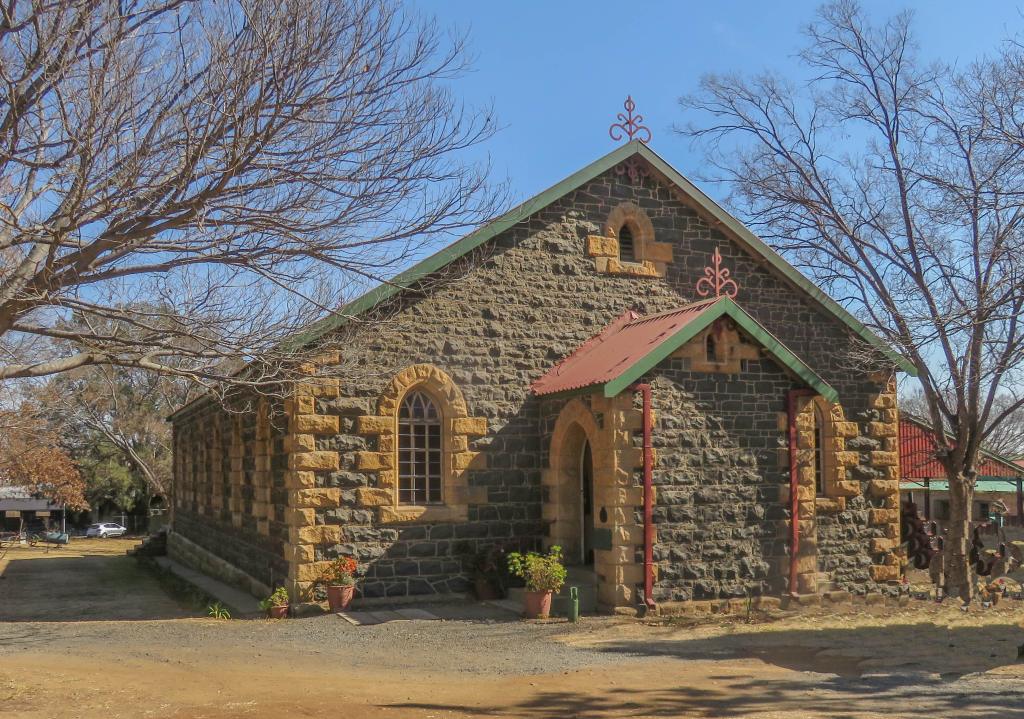
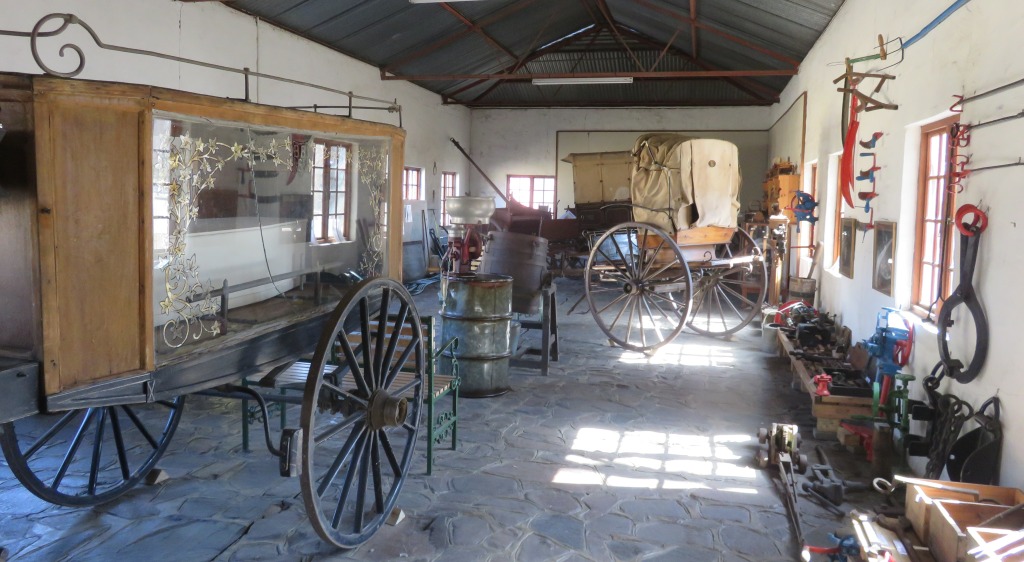 The museum, dedicated to the history of the town and its surrounding area, was opened in 1964. That was during the centenary celebrations of the town. The building used to be the church of the NG Sendings Kerk, that was the missionary arm of the NG Church (Nederduitse Gereformeerte Kerk). It was started in 1906 and completed 1910.
The museum, dedicated to the history of the town and its surrounding area, was opened in 1964. That was during the centenary celebrations of the town. The building used to be the church of the NG Sendings Kerk, that was the missionary arm of the NG Church (Nederduitse Gereformeerte Kerk). It was started in 1906 and completed 1910.
The exhibits are mainly from the history of the town and surrounding.
Children's home
 The Charlotte Theron Children's Home is a well known institution for looking after orphaned and needy children. It carries the name of Charlotte Theron because she was the initiator of the children's home,
The Charlotte Theron Children's Home is a well known institution for looking after orphaned and needy children. It carries the name of Charlotte Theron because she was the initiator of the children's home,
Charlotte Theron was born in 1842, married Servaas de Kock and had two children from that marriage. Their first baby died and the second died at 4½ years, in between her husband also died. 1878 she married the widowed Charles Theron, the first minister of the NG church in Bethlehem. She started looking after needy children, turning the rectory into an orphanage. The number became seven during the Anglo Boer war and jumped to 47 at the end of the war. A tin shack had to be erected to house all of them.
Expansions and additional buildings followed until in 1924 the foundation stone for a new building in a new location was laid. And I have to admit at this point I am getting a bit confused with the information I have. An other visit is necessary to clarify which buildings were erected when.
Town Hall
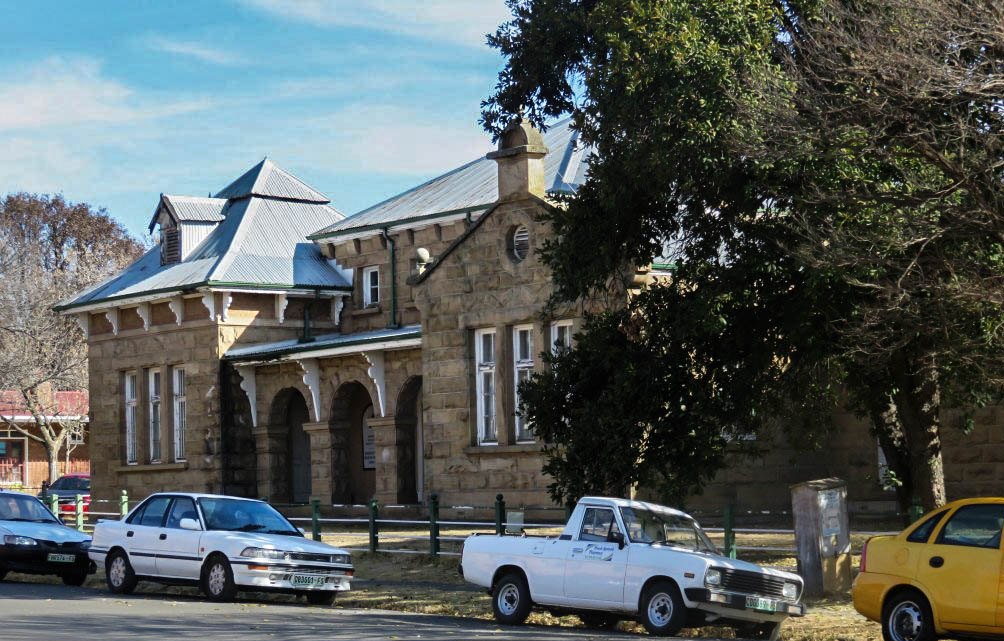 One of those attractive sand stone buildings so typical for this area, which has been build on sandstone. I mention this because it is one of the very early buildings in town, and it is still standing. Although not used as such nowadays, some government department has taken it over. According to the foundation stone it was laid in February 1888 by the then stae president W.Reitz.
One of those attractive sand stone buildings so typical for this area, which has been build on sandstone. I mention this because it is one of the very early buildings in town, and it is still standing. Although not used as such nowadays, some government department has taken it over. According to the foundation stone it was laid in February 1888 by the then stae president W.Reitz.
Cemeteries
the grave at the railway line
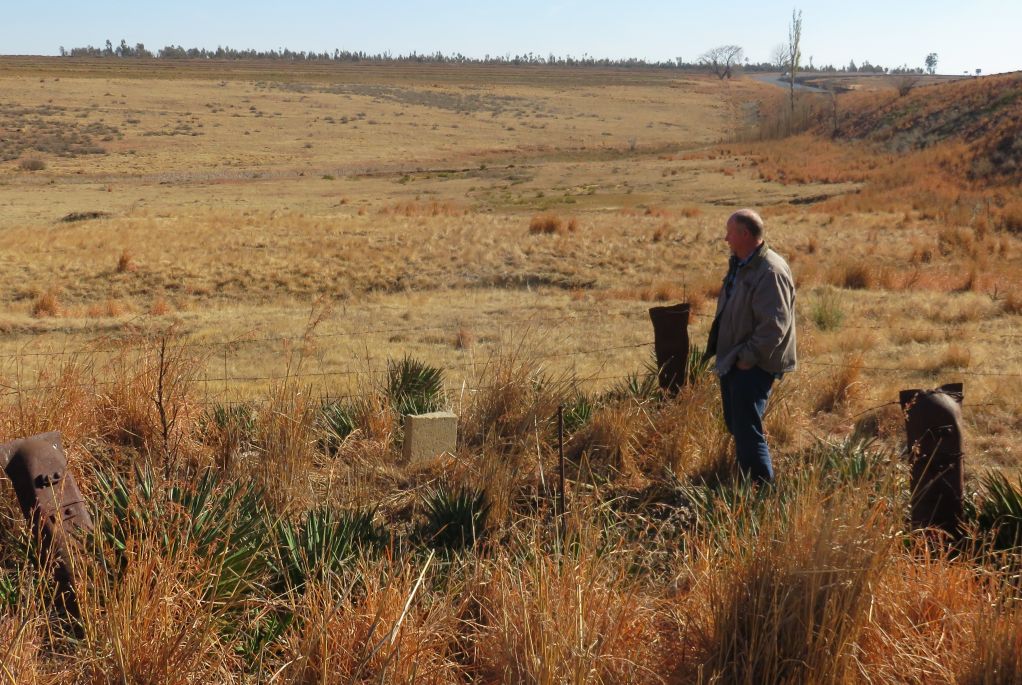 Coming from Reitz where the road passes over the railway line, about 10km out of Bethlehem, near the bridge is a lone grave next to the rails. This is the grave of Cornelius van Heerden. Why is it there?
Coming from Reitz where the road passes over the railway line, about 10km out of Bethlehem, near the bridge is a lone grave next to the rails. This is the grave of Cornelius van Heerden. Why is it there?
Cornelius van Heerden was certainly a troubled youth. At the time of the massacre he had a court appointment for negligent driving, his own dad had charged him with theft and he had just lost his job at the railway due to absenteeism. He felt persecuted.
On the 26 November 1931 he went on a rampage His first kill was Edward Darby, a traveling sales man. He took his car with the body on the passenger seat and went into Bethlehem. On the way he shot at some railway workers and a passing black woman. He was looking for his father who had a gang working on the rail with the indent of killing him, but couldn't find him. On the way he shot at more people and then came across Michael Prinsloo who with a group of workers was planting gum trees. He shot and killed him and wounded two of his workers. Antonie Michael Prinsloo was a Boer war veteran who had risen to the rank of general.
The police eventually caught up with him, cornering him at Liebenberg's vlei. He killed himself. The final count was 5 killed, including van Heerden, and 6 wounded.
When it came to burying his body the town council refused to have him in their cemetery. Some arrangement was made with the railway that he could be buried next to the railway line far out of town.
 There is a problem with the date, on Prinsloo's grave as well as on the cairn erected next to the road where he was killed states 1930. All the other references consulted give the year as 1931. The strongest proof that 1931 is the correct information comes from newspaper clippings showing the date of printing.
There is a problem with the date, on Prinsloo's grave as well as on the cairn erected next to the road where he was killed states 1930. All the other references consulted give the year as 1931. The strongest proof that 1931 is the correct information comes from newspaper clippings showing the date of printing.
The plaque on the cairn reads: at this spot the Boer hero Genl Rooi Michael Prinsloo was shot dead by a mentally disturbed person on 12 November 1930. More problems, the date doesn't agree with the other references.
More information about this case can be found on this website. I have also written an article on the subject for the Heritage Portal, it will be found here.
the old town graveyard
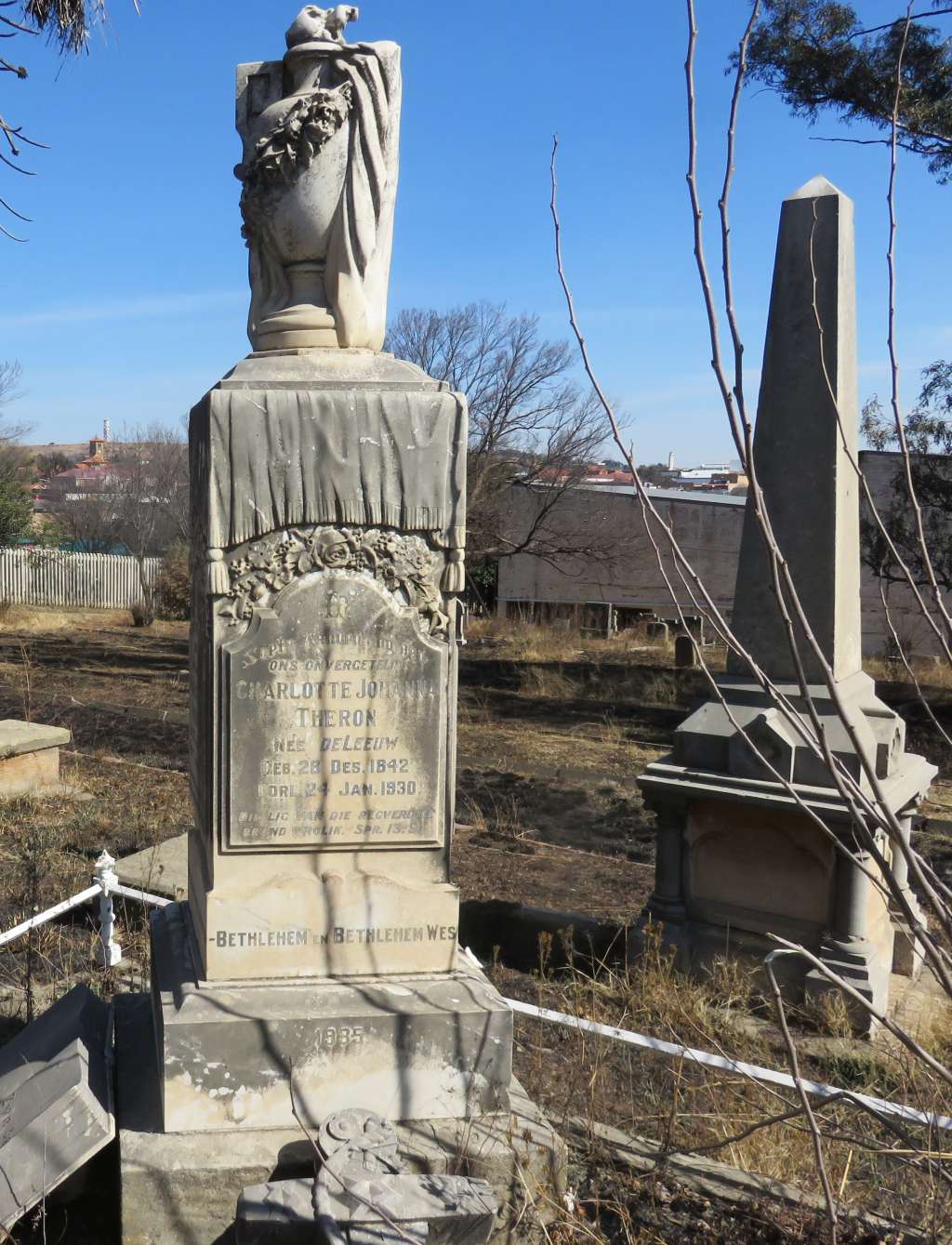 It is the cemetery in Lamond Street. It contains a number of interesting graves. The first one I like to mention is the grave of Charlotte Theron, we met her further up as the wife of the first NG minister, Charles Theron, and the initiator of the children's home. The grave stone reads, translated: Charlotte Johanna Theron; ne deLeeuw; born 28 Dec 1842; died 24 Jan 1930.
It is the cemetery in Lamond Street. It contains a number of interesting graves. The first one I like to mention is the grave of Charlotte Theron, we met her further up as the wife of the first NG minister, Charles Theron, and the initiator of the children's home. The grave stone reads, translated: Charlotte Johanna Theron; ne deLeeuw; born 28 Dec 1842; died 24 Jan 1930.
Railway station
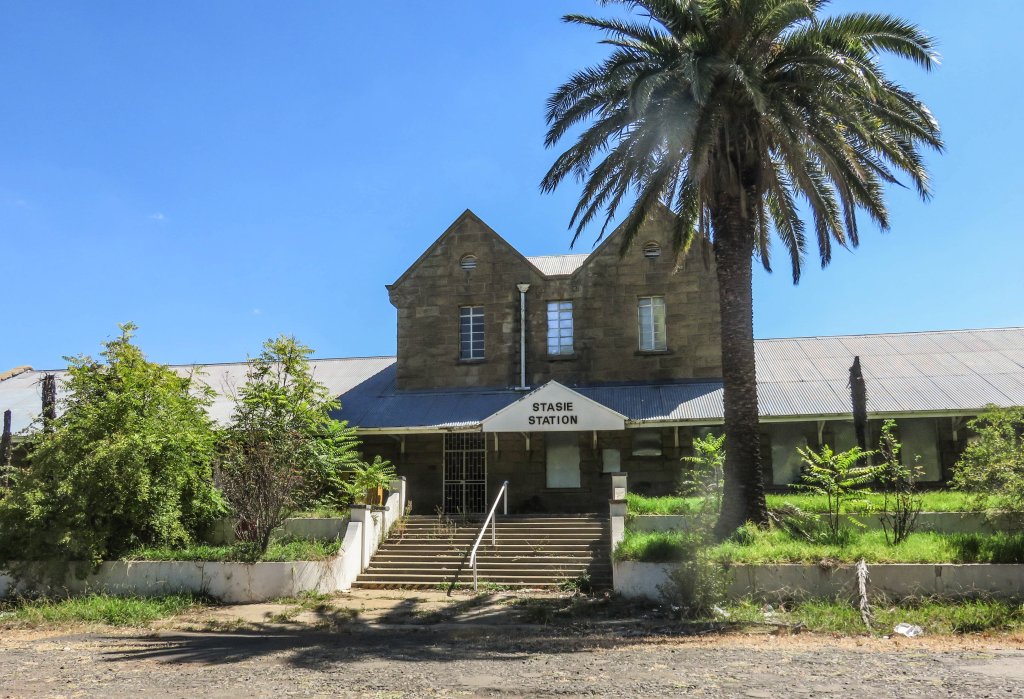
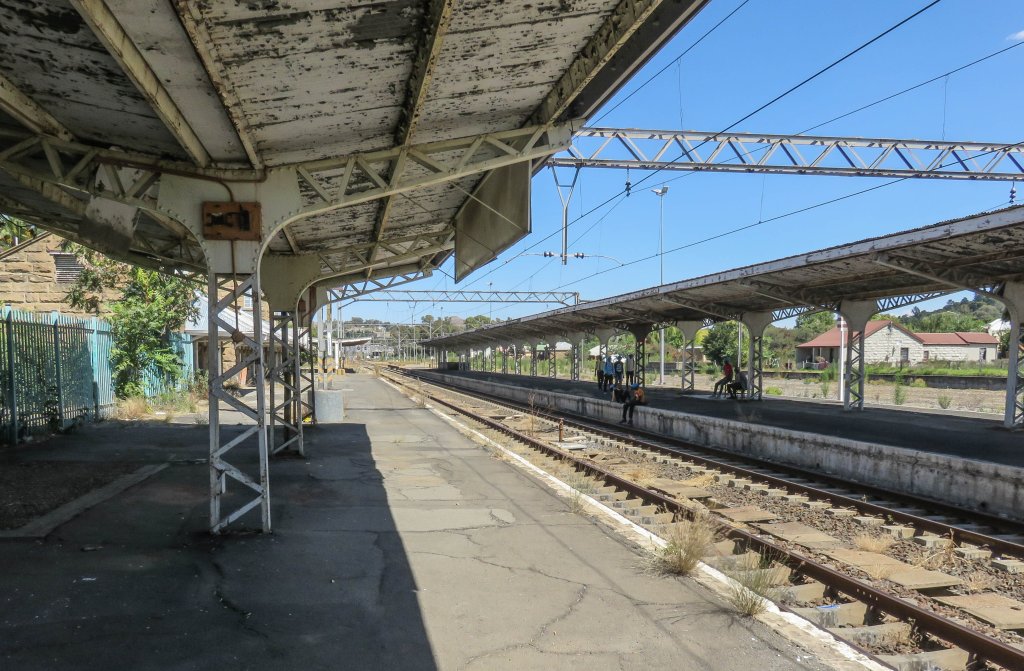 The station buildings and the station is still there, but no passengers are boarding any trains there, at least it doesn't look that way. We gained access to the platforms by squeezing through a gap in the fence, security somehow didn't mind.
The station buildings and the station is still there, but no passengers are boarding any trains there, at least it doesn't look that way. We gained access to the platforms by squeezing through a gap in the fence, security somehow didn't mind.
The place must have been a very busy junction, from here one could go into four directions. North to Frankfort and Johannesburg, East
 to Harrismit and Durban, South to Ficksburg and Bloemfontein and West to Kroonstad.
to Harrismit and Durban, South to Ficksburg and Bloemfontein and West to Kroonstad.
The pictures are snapshots of the days when passenger service was still a function of the railway.
References
Ref 1.: A.P.J. van Rensburg, Eeufees-Album van die Ned.Geref.Gemeente Bethlehem 1869-1969
Ref 2.: Standard Encyclopaedia of Southern Africa, Nasou Limited
Ref 3.: Charlotte Theron Kinderhuis 1903-2003, unknown publisher